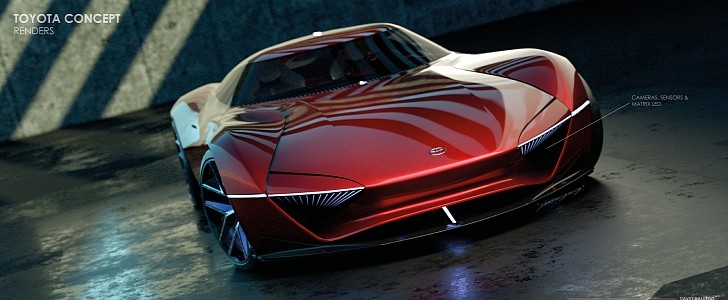Back in the '60s, Japanese cars had already built the image of reliable, practical vehicles they still carry to this day, but they were severely lacking in the excitement department.
There were no Nissan GT-Rs, no Toyota Supras, and no Subaru STIs - all they had were drab sedans and station wagons. Then 1967 came, and out of the blue, Toyota launched the GT2000. It's hard to describe what that must have felt like then. The best comparison we can think of is Tesla launching a gas-powered car - it was that surprising.
Not only was the 2000GT different from the rest of the vehicles coming from Japan, but it was also very, very good. Not to mention exceptionally beautiful. It came a few years after the equally gorgeous and even more famous Jaguar E-Type, which it drew heavy inspiration from. The British sports car is still considered to be the better design, but one could argue that's just because it came first because the Japanese sports car is just as beautiful, at the very least.
The Toyota 2000GT marked the beginning of a lot of great models that came from Japan - it basically made the manufacturers there lose their inhibitions and find the belief that they could rival the very best performance models from Europe or America, something that's been proven right time and time again.
Now, a digital artist recognized the value of this model in Toyota's history and used it as the basis for a fictional sports car of the future called H2+. The name gives us a pretty good clue about what powers the vehicle's four motors: a liquid hydrogen fuel cell, the technology Toyota insisted on for so long but seems to have given up on lately.
Other sources of inspiration from the Japanese brand's history include the 1990s Toyota Supra, but also the raccoon-faced modern Aygo hatchback. In the end, David Gallego settled on a sleek design that doesn't quite manage to capture the long hood and pushed-back cabin of the original 2000GT but is there in terms of spirit.
We're looking at a modern sports car (actually, it's a future sports car since David dated it for 2030) with four electric motors and variable interior configurations that can accommodate up to three people. It has small trunks on either side just in front of the cabin (sunks?), with the space where the engine would sit taken up by the liquid hydrogen tank.
The vehicle also features a rather large battery pack, suggesting it could function as a plug-in BEV for most of the time and only use the fuel cell on longer trips. The H2+'s performance is left to anyone's guess but looking at its profile and considering it has an electric motor for each wheel, it's safe to assume it wouldn't be sluggish. But even if it were, it still wouldn't matter because the H2+ is all about the design. And it sure nails it right in the head.
Not only was the 2000GT different from the rest of the vehicles coming from Japan, but it was also very, very good. Not to mention exceptionally beautiful. It came a few years after the equally gorgeous and even more famous Jaguar E-Type, which it drew heavy inspiration from. The British sports car is still considered to be the better design, but one could argue that's just because it came first because the Japanese sports car is just as beautiful, at the very least.
The Toyota 2000GT marked the beginning of a lot of great models that came from Japan - it basically made the manufacturers there lose their inhibitions and find the belief that they could rival the very best performance models from Europe or America, something that's been proven right time and time again.
Now, a digital artist recognized the value of this model in Toyota's history and used it as the basis for a fictional sports car of the future called H2+. The name gives us a pretty good clue about what powers the vehicle's four motors: a liquid hydrogen fuel cell, the technology Toyota insisted on for so long but seems to have given up on lately.
Other sources of inspiration from the Japanese brand's history include the 1990s Toyota Supra, but also the raccoon-faced modern Aygo hatchback. In the end, David Gallego settled on a sleek design that doesn't quite manage to capture the long hood and pushed-back cabin of the original 2000GT but is there in terms of spirit.
We're looking at a modern sports car (actually, it's a future sports car since David dated it for 2030) with four electric motors and variable interior configurations that can accommodate up to three people. It has small trunks on either side just in front of the cabin (sunks?), with the space where the engine would sit taken up by the liquid hydrogen tank.
The vehicle also features a rather large battery pack, suggesting it could function as a plug-in BEV for most of the time and only use the fuel cell on longer trips. The H2+'s performance is left to anyone's guess but looking at its profile and considering it has an electric motor for each wheel, it's safe to assume it wouldn't be sluggish. But even if it were, it still wouldn't matter because the H2+ is all about the design. And it sure nails it right in the head.












